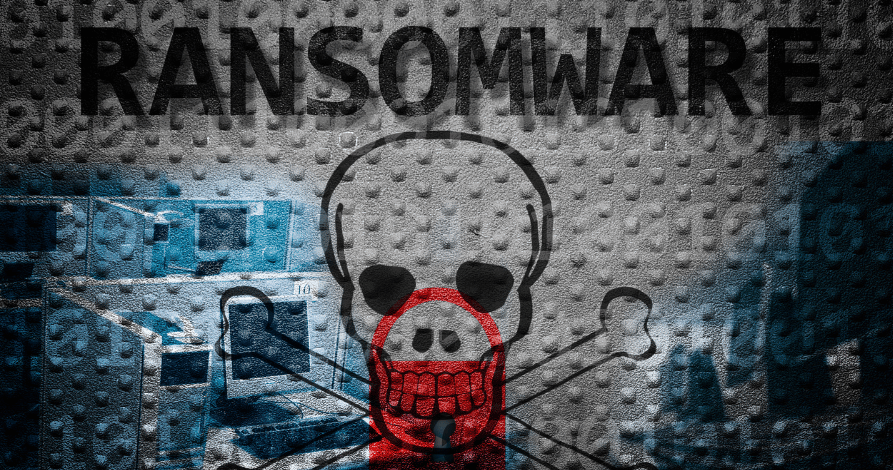DevOps – a methodology that brings together Development (Dev) with Operations (Ops) – has transformed software development for the better. Software teams that adopt the DevOps approach can coordinate their priorities and communicate with each other to deliver high-quality work and speed up time-to-market.
Security was not really a focal point of the DevOps idea. But now, as the cyberthreat landscape expands and cyberattacks and data privacy breaches become more common, software teams are looking to incorporate security considerations into their DevOps ecosystem. Enter SecOps.
SecOps is a new approach to software development that combines security and operations teams to ensure that security is baked into the entire software development lifecycle (SDLC). The approach “operationalizes” security to harden the software environment and enable organizations to meet both their application security and performance goals.
SecOps Explained
SecOps evolved partially as a result of the significant advantages provided by DevOps. Like DevOps, SecOps blends two previously distinct processes. But where DevOps combines development with operations, SecOps combines security with operations.
SecOps encourages collaboration between these teams throughout the SDLC. Its overarching goal is to get them to function as one security-conscious team and ensure that application security is not sacrificed in favor of development timelines, uptime, or performance.
How SecOps Works
By fusing security with operations, SecOps aims to address vulnerabilities and reduce risks without affecting business agility. To inform and ensure such collaborations, SecOps leverages Security Operations Center (SOC) processes, tools, practices, and personnel.
Many organizations establish a dedicated SOC where team members work together to:
- Monitor the entire IT environment, including on-premises assets and the cloud infrastructure
- Gather threat intelligence. i.e., evidence-based and contextual knowledge about possible threats and attackers’ threat tools, targets, motives, and attack behaviors
- Implement incident response to contain the damaging impact of a security event
- Perform digital forensics to find the root cause of an incident, strengthen enterprise cyber defenses, and prevent future recurrence
SecOps aims to introduce security measures early and at each stage of the SDLC by automating important security tasks. This helps create stronger security practices and ensures that all SDLC processes operate safely and securely from start to end.
The SecOps approach establishes a security-first mindset throughout every person involved in the SDLC. The idea is to think about security from the very beginning of the SDLC, rather than later during testing or just before release. A big-bang testing approach often results in vulnerabilities remaining unfixed and increase the risk of an attack or breach. In contrast, SecOps focuses on early vulnerability detection, prioritization, and fixes. That’s why teams don’t wait to test the entire program at once. Instead, they regularly check smaller work units and fix issues immediately – often with the help of automated tools and processes.
Why Organizations Need SecOps
Before SecOps, security and operations were separate functions with little or no communication or collaboration between them. The dev team would create systems, the ops team would operate and maintain them, and the security team would secure them. This siloed approach worked in the past because dev cycles were longer, markets were less dynamic, and customers were less demanding. Most importantly, security concerns were few and far between. Times have changed so this older approach doesn’t work anymore.
Today, cyber incidents are the top concern for companies globally, with 44% of companies listing cybersecurity attacks as a more serious worry than business interruptions (42%) or natural disasters (25%). Moreover, cybercriminals can successfully penetrate 93% of company networks to gain access to local network resources. These facts show that organizations can no longer afford to think about security as an “afterthought” to the SDLC process.
Waiting to perform security testing much later the SDLC introduces security gaps that leave the organization vulnerable to all kinds of cyberattacks. Dev teams must fix these gaps to protect the organization. But doing so requires time, which lengthens release cycles and delays go-to-market. Some organizations risk leaving the vulnerabilities unchecked and release the application as-is to speed up time-to-market. However, this results in an insecure product that can potentially damage customers and the organization’s reputation.
A combined Sec+Ops team can oversee security during every phase of the SDLC, ensuring that the final product is secure. The SecOps approach also ensures a faster and more proactive security response, thus protecting the application, the organization, and its customers.
For all these reasons, all modern organizations should consider adopting SecOps.
The Benefits of SecOps
By eliminating the siloes between the operations and security team and by establishing a dedicated SOC, SecOps:
- Boosts the security of the tech and development environments
- Increases transparency into security vulnerabilities
- Promotes cross-team collaboration to aid in the fast resolution of security issues
- Reduces the number of configuration errors and ties code changes with deployment rules to reduce app disruptions
- Informs risk management processes and helps create a stronger enterprise security posture
SecOps streamlines both security and operations to bring a balance between application security, performance, reliability, and integrity. It helps improve operational efficiency, and also minimizes downtime and compliance failures, resulting in a more secure development environment and improved user experiences.
Adopting a SecOps approach enables teams to build security into the dev environment from the outset, thus ensuring that the final product is free from most – and if possible, all – vulnerabilities. They can also check and apply security policies proactively to prevent security incidents and resolve issues quickly. In addition, these policies can be defined as “policies-as-code” and applied automatically and globally to every IT resource. This approach continually protects the enterprise against threats while helping to maintain the pace of innovation.
SecOps improves communication and information-sharing between teams so they can better understand where vulnerabilities exist, implement real-time remediation and incident response, and enhance overall IT hygiene. They can also automate many security processes to reduce the burden of manual work while bumping up the security of the dev environment.
Key Roles in a SecOps Team
In SecOps, security ops are baked into the company’s entire SDLC. Moreover, security is everyone’s responsibility, not just the responsibility of the Security team. Everyone with any role in the SDLC is included in SecOps and they all collaborate at every step to find and fix vulnerabilities as early as possible.
Several dedicated roles help implement SecOps principles and boost an organization’s SecOps efforts. These roles are:
- SOC Manager
- Security Engineer
- Security Analyst
- Incident Responder
- Security Investigator
Best Practices to Implement SecOps
As mentioned earlier, the traditional development approach didn’t focus much on security with teams only thinking about it when they discovered an issue. In contrast, security is baked into the SDLC under SecOps, providing a more reliable bulwark against cyberthreats. Since SecOps plays such a vital role in the SDLC, it’s helpful to keep in mind these best practices when incorporating this approach:
Define the SecOps scope
Organizations should assess their security requirements and existing security gaps to determine which functions will be within the scope of the SecOps. The scoping exercise is useful for prioritization and to determine if any security tasks can be outsourced to an external team or firm.
Provide SecOps training
Effective SecOps requires a knowledgeable and skilled SecOps team to understand how to function as a unified team and deliver tangible value. And for this, training these resources is essential. To impart this training, the company can use ready-made resources and third-party courses or develop SecOps courses in-house.
Invest in SecOps tools
SecOps success depends on the right types of security tools. These tools secure the organization and ensure that the SDLC runs smoothly and securely.
Conduct red team and blue team exercises
Threat intelligence is an important component of SecOps. One way to hone the SOC team’s threat intelligence capabilities is by conducting red team and blue team exercises. Armed with the right tools, these teams can help protect the organization in a comprehensive manner.
Common SecOps Challenges
In an era where security risks have increased and organizations are forced to operate in a sophisticated threat landscape, SecOps offers multiple benefits for organizations of all sizes. And yet, many fail to implement this methodology to harden security throughout the SDLC. This is because SecOps is not without its challenges. Fortunately, organizations can overcome these challenges with automated and cutting-edge tools and solutions like ForeNova NovaCommand and Managed Detection and Response.
Proliferation of sophisticated cyber gangs
According to one recent survey of 500 CISOs and other security leaders, a majority of SecOps specialists say that ransomware is the biggest threat facing their organizations. This finding is unsurprising, considering that 85% of them have suffered a ransomware attack in the last 5 years and 98% of these attacks resulted in operational downtime, data losses, and costly fines.
In addition to ransomware gangs, many companies are also worried about phishing, social engineering, data exfiltration, and supply chain attacks. All these threats combined with multiple high-profile attacks in 2021 are among the top challenges for SecOps teams.
Skills shortages
Organizations need skilled SecOps personnel to keep up with the increasing frequency and sophistication of security threats. And yet, this is exactly where many are falling short. There is a tremendous shortage of skilled cybersecurity personnel, particularly in the areas of endpoint security, data security, and network security.
Additionally, the SecOps turnover rate is very high due to low job satisfaction and high burnout. These issues result in a serious shortage of team members to keep an eye on real-world security threats and vulnerabilities. Such shortages prevent enterprises from carrying out security operations effectively, which is why 61% of respondents in a 2021 SANS survey reported that staffing was their biggest SecOps concern.
Complex hybrid environments
Modern enterprise IT environments are no longer narrowly defined by perimeter firewalls or on-premises resources. Instead, many organizations now have hybrid environments encompassing both on-premises and cloud-based resources, as well as remote workers, mobile devices, and even shadow IT.
These new-age developments create numerous security challenges for companies worldwide. For one, security staff must think about ways to protect both on-premises and cloud resources. They must also protect end users, many of whom work remotely from outside the organization’s security perimeter. All of this is easier said than done.
Lack of automation
As the IT infrastructure expands and becomes more complex, it becomes harder to manually perform low-level tasks to ensure enterprise security. One such task is reviewing and triaging the alerts raised by security tools like SIEM platforms. And yet, all these tasks are essential to carry out cybersecurity operations.
Automated solutions can reduce the burden of manual tasks and increase SecOps effectiveness. With the right automated tools, SecOps teams can keep up with the large volumes of events and log entries generated by monitored systems. More importantly, these tools will help them triage and appropriately action alerts to keep threats at bay and continually protect the organization.
Overcoming these challenges with NovaCommand Security Platform and Managed Detection and Response (MDR)
ForeNova’s NovaCommand and MDR are two powerful ways to overcome SecOps limitations and garner SecOps benefits. NovaCommand compensates for organizations’ resource limitations and reduces the workload for SecOps teams. This unified security platform provides a RESTful API, allowing SecOps specialists to create effective playbooks and respond automatically to threats.
Backed by thousands of network signals and 800+ AI models, NovaCommand monitors threats – even hidden ones – across the entire network. Plus, it automates data collection and processing, and triages alerts in minutes or hours instead of days. It also integrates with existing solutions to ensure seamless SecOps. Thus, NovaCommand provides comprehensive and continuous protection for all kinds of organizations.
Organizations that lack the resources or funds to set up a formal SecOps function can also benefit from ForeNova’s Managed Detection and Response service. MDR leverages world-class security technology and experts to provide 24x7 non-stop monitoring of enterprise endpoints, networks, cloud, and identities.
- It also detects and responds to the stealthiest and most sophisticated cyberattacks, while reducing the workload of IT teams and making up for enterprise skills shortages. Organizations that leverage ForeNova MDR can strengthen their security operations and safeguard their assets from an ever-expanding threat landscape.
Important SecOps Tools
A “multi-layered” approach to security is vital for the success of SecOps. In addition to standard perimeter defenses like firewalls and VPNs, today’s SecOps-led enterprises also need more sophisticated tools to bulk up defenses, protect resources, and respond proactively to cyber threats and risks. These include:
- DNS security platforms to prevent attackers from exploiting the company DNS to compromise enterprise resources and exfiltrate or access data
- Anti-phishing tools to analyze and mitigate email-based threats
- Data discovery platforms to discover and secure sensitive data
- Network detection and response (NDR) to analyze typical network traffic for suspicious behaviors and detect and respond to threats on the network using machine learning and data analytics
- Packet capture and storage tools to analyze packet data and investigate the full extent of a cyberattack or data breach
- Network detection and response (NDR) should also be a key element of the multi-layered security approach in SecOps along with security information and event management (SIEM) platforms and endpoint detection and response (EDR) tools. NDR tools to analyze typical network traffic for suspicious behaviors and detect and respond to threats on the network using machine learning and data analytics. They empower security teams to detect and eradicate threats after an initial compromise but before a breach, thus strengthening enterprise defenses – even against advanced threats.
Organizations should also consider implementing security-policies-as-code solutions to protect their assets against threats. They should also adopt tools that standardize the tracking of security incidents and support automated incident identification, prioritization, and remediation from a single centralized platform.
Automated tools are a crucial element of a SecOps program. Automation frees up human analysts from manual tasks and allows them to focus on critical SecOps strategy. They will also be able to prioritize different types of threats and implement the best possible remediation strategies for existing and new risks.
At the very least, a SecOps program should include automated tools for:
- Incident detection, response and analysis
- Landscape analysis
- Security training gamification
Conclusion
SecOps has quickly become a prominent SDLC practice in all kinds of organizations. In the coming years, companies will focus more on proactive threat hunting, develop success metrics for their SOCs, and embrace AI and machine learning to inform their SecOps strategies. Security and operations teams will take advantage of these capabilities to coordinate with each other and deliver more secure solutions to their customers.


.svg)

.svg)
.svg)




